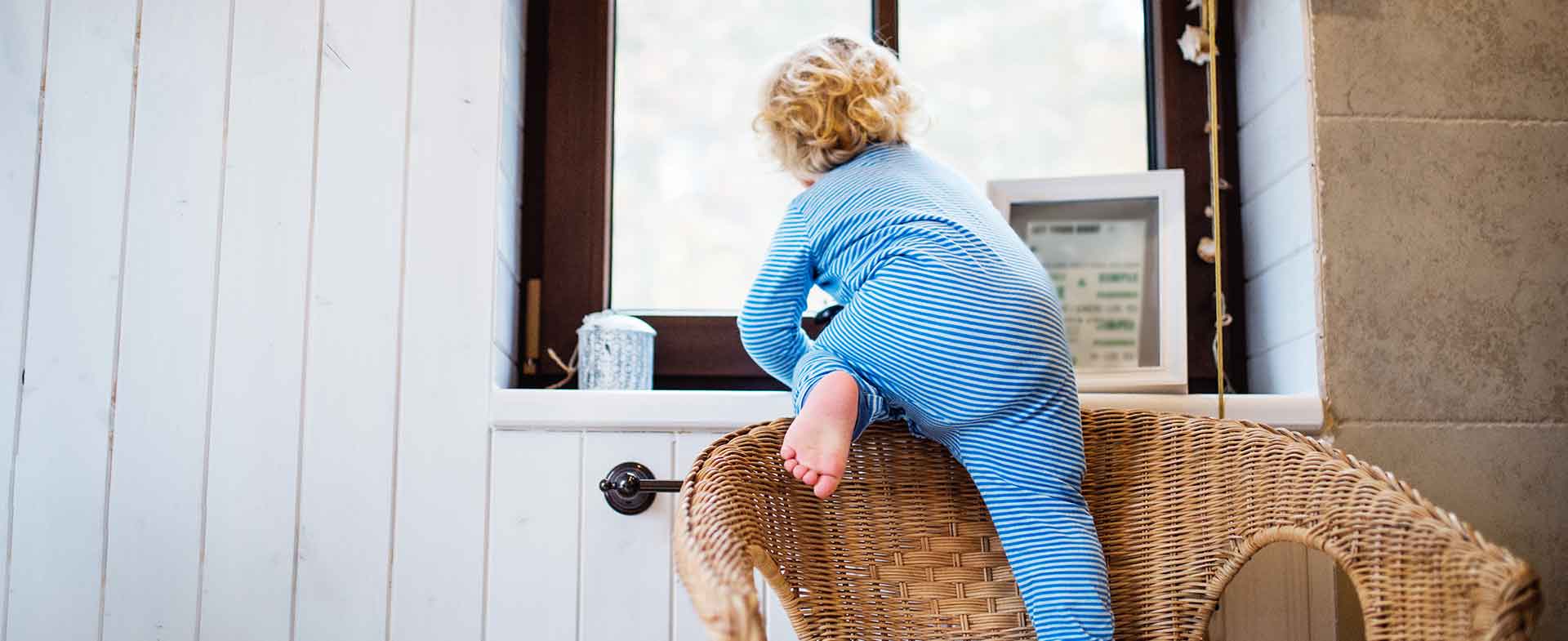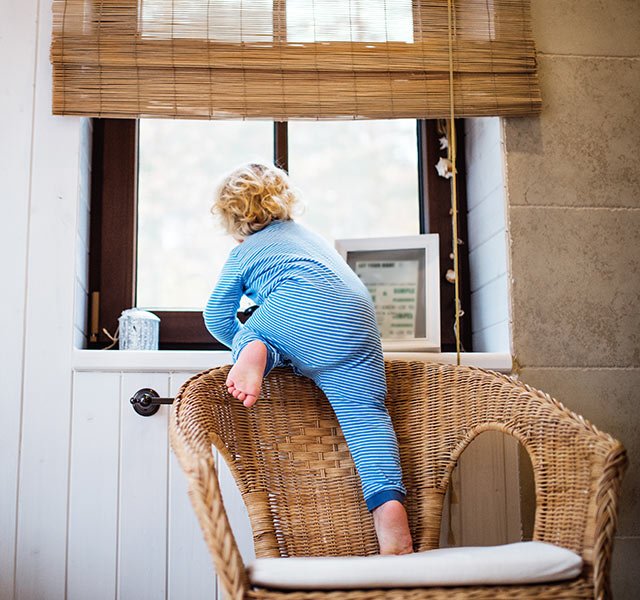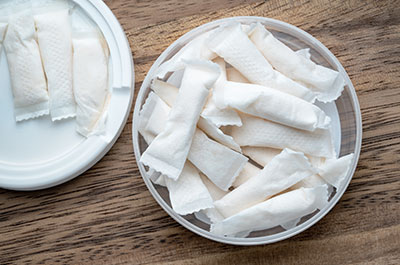Babyproofing is a bridge every new parent has to cross. The goal, of course, is to make sure your children don't get into things that could harm them.
"Most injuries and deaths during early childhood are accidental, and they happen in the home," says Sarah Lavery, R.N., a registered nurse at Henry Ford Health. The best way to protect your child: Eliminate potential hazards.
Babyproofing Steps
When it comes to babyproofing your house, outlet covers, cabinet ties and even toilet seat locks seem like no-brainers. But there are other dangers lurking in your home — and out in the world — that you may be less likely to think about.
Among the many potential threats:
- Your purse. From lipstick and sunscreen to over-the-counter medications and prescriptions, your purse is a hot zone for trouble. While you may remember to stash your pocketbook on a high shelf at home, it's not uncommon for parents to toss their purse in the back seat of the car, within reach of a curious toddler.
- House plants. You may already know that poinsettias, daffodil bulbs and hydrangeas can be toxic if ingested. But other plants can also pose a potential threat. Potting soil, for example, can be a choking hazard for small children. Keep house plants out of reach of your child (or out of your home entirely) and watch out for small objects like rocks and soil.
- Furniture. While you might remember to anchor large furniture and televisions to the wall, it's not uncommon for parents to forget about sharp edges. If you've ever hit your knee on the corner of a heavy coffee table or nicked your hip on a low countertop, you know that furniture edges hurt. The potential damage is far worse for a toddler. Run your hands over every edge of every item, then soften trouble spots with corner protectors, edge guards or even hollow pool noodles.
- Windows. Kids that climb on furniture may be able to access windows and tumble through them, even if screens are in place. If you're opening a window for ventilation, make sure you open it from the top. You can also install guards on windows to prevent them from opening more than a few inches.
- Plastic bags. Parents use plastic bags for everything from collecting dirty diapers to lining trash cans. Unfortunately, plastic bags can be a major suffocation hazard for babies and toddlers. Throw plastic bags into a trash can (with a lid) after use and make sure to store unused bags out of reach.
- Antiques. Small children may be especially drawn to beautiful, eye-catching objects. In addition to the danger of breakage, antiques may harbor harmful substances like lead. If you have old items at home, remove them from the baby's field of reach (and view!).
- Toiletries. You might not think twice about keeping shampoo, conditioner and body wash on your tub’s edge, but all of these products can be dangerous if they're ingested by children in large amounts.
Babyproofing Strategies
When you follow your child around your home, you'll quickly notice less obvious dangers. A few strategies to reduce your margin of error:
- Take a crawling tour. It's tough to see potential hazards when you're not at a toddler's eye level. Getting down on all fours will give you a new perspective and help you identify dangers before they become problematic.
- Be prepared. "Plan for your child to get into something that should remain off-limits," Lavery says. "Keep the poison control number handy — 1-800-222-1222 — and have your pediatrician's number logged into your phone."
- Learn CPR. Every parent should take a cardiopulmonary resuscitation (CPR) class for children and infants. Unable to attend live? The American Heart Association offers CPR Anytime Training Kits so you can learn how to save lives from the comfort of your own home.
- Get a rug. Sliding on floors may look like fun to a small child but slipping can cause a major accident. Lay down rugs with non-slip backing for a quick and easy way to cushion falls. No rug? Make sure to repair loose tiles, linoleum cracks and lifting carpets to prevent slips and falls.
Childproofing Through The Stages
Babyproofing your home isn't a one-time job. With each stage and phase of life, a whole new set of concerns crop up (think cell phones and teenagers!). In fact, once your baby starts walking, more potential hazards arise.
The best way to keep your child safe? "Stay vigilant, especially as we venture into the holiday season," Lavery says. "You may be attending events at loved ones' homes and enjoying visits with family members. In these new environments with a lot of social activity, it's especially important to keep your eyes on small children."
Once you become more aware of the threats in your home (and visits to other people's homes), you'll begin noticing things you never thought of before. But be sure to allow your child to explore while you keep a watchful eye. Kids learn and grow only by investigating their surroundings.
Subscribe today to receive weekly emails of our latest tips.
To find a pediatrician at Henry Ford, visit henryford.com or call 1-800-436-7936.
Sarah Lavery is a registered nurse and the Prenatal Education Coordinator for the West Bloomfield Birthing Unit at Henry Ford West Bloomfield Hospital.



